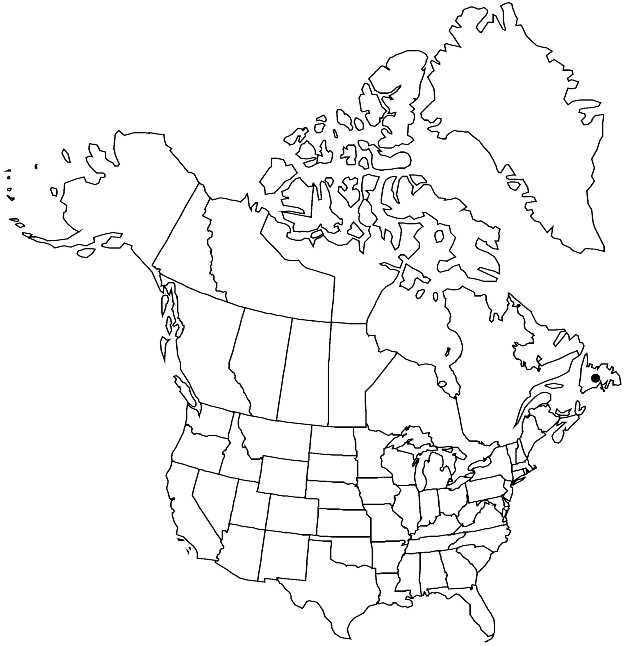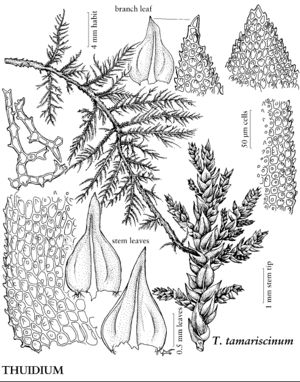Thuidium tamariscinum
in P. Bruch and W. P. Schimper, Bryol. Europ. 5: 163. 1852.
Plants vivid green to yellowish brown. Stems to 15 cm, (2 or) 3-pinnate, frondose; paraphyllia papillose near mid cell. Stem leaves loosely erect when dry, erect-spreading when moist, broadly ovate, plicate, 1.5–2 mm; margins revolute to base of acumen, denticulate distally; apex gradually to abruptly acuminate; costa ending near apex; distal laminal cells rounded to elliptic, 13–20 × 8–10 µm. Branch leaves apical cell acute, smooth. Primary branch leaves 0.8 mm; costa ending before apex. Secondary branch leaves to 0.4 mm; apex acute; costa ending mid leaf. Perichaetial leaves 3 mm, margins long-ciliate proximally, serrate distally. Seta 2.5–4.5 cm. Capsule 3–4 mm; operculum 1.8 mm, obliquely long-rostrate; endostome cilia in groups of 3 or 4. Spores 12 µm, smooth or very finely papillose.
Phenology: Capsule maturity unknown.
Habitat: Moist soil, soil over rock, stream beds
Elevation: low elevations
Distribution

Nfld. and Labr. (Nfld.), West Indies (Jamaica), Europe, e Asia (Japan, Russian Far East).
Discussion
Thuidium tamariscinum is a woodland species of relatively large and elegantly frondose plants. The branching is typically 3-pinnate but sometimes 2-pinnate or imperfectly 3-pinnate. The primary branch leaves are 2-plicate with somewhat recurved proximal margins and delicate costae. The secondary branch leaves have erect margins and weak costae. The laminal cells are stoutly 1-papillose, except that the apical cell of branch leaves is sharp and smooth.
Selected References
None.
